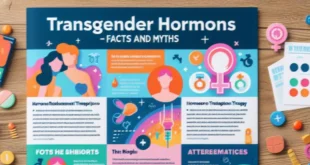No one wants to go to the doctor, right? Studies indicate that young people especially do not seek health care unless they are sick or in crisis. Of course, these studies usually describe only a certain segment of young people – namely those with homes, with families, in school, and not gay, lesbian, bisexual or transgender (GLBT) identified. Strangely, these are the youth most likely to be healthy and not engage in risky behaviors in the first place.
Recent studies of New York City’s homeless youth, unsurprisingly, show many pressing health care needs. Because of the exposure they endure on the street, these youth are particularly susceptible to many negative health conditions. Violence, rape, sexually transmitted diseases (STDs), tuberculosis (TB), HIV/AIDS, poor nutrition, poor hygiene, chemical dependency and a host of other health-related issues that are the result of surviving on the street are not uncommon. However, one study also showed that when youth on the street have a respectful, trusting and meaningful relationship with an outreach worker they are more likely to seek health care services – both acute services (like STD treatment) and preventive services (like immunizations). Also, when connected to a respectful outreach worker or team offering referrals, they are apt to seek social and psychosocial services from youth-serving agencies. They are even more likely to access care when those health and social services are appropriate to their needs, respectful, and accessible on all levels (no cost, easily reachable location, culturally competent staff).
Many youth expressing non-gender conforming behavior or identifying as transgender find themselves rejected by family, school, church, peers and other communities of origin. They often become homeless and unemployable, and are forced into the street economy – very often into sex work. Compared to their gay, lesbian and bisexual (GLB) peers, transgender youth are often far more marginalized and disenfranchised, often finding themselves unwelcome even at GLB youth-serving agencies. ‘Traditional’ housing alternatives, drug treatment programs, health centers and other services are ill-prepared to work with transgender youth in any kind of affirming, supportive manner. The educational system, while slowly moving towards a more GLB friendly environment is still transgender-ignorant and -phobic. These places for youth refuse to deal with young people who do not fit their ‘norms.’ Youth who present these challenges are often just left out.
Transgender Youth Health Risks
The list of negative influences could go on, and unfortunately the result is the same: transgender youth become further at-risk. Those on the street are often faced with double and triple stigmas that can directly and negatively impact their health. For instance, transgender youth taking hormones are often doing so without the supervision of a licensed medical provider. They may be using bootleg substances, may be over self medicating, and may be incorrectly injecting or sharing needles to administer their hormones.
Few medical providers are adequately trained in the proper hormonal treatment of transgender people, and those that are, rarely provide care to minors without parental consent. Since parental consent is not the norm, especially for those who are homeless or otherwise detached from their families, many young people legitimately requiring hormonal therapy go without until they reach the age of majority. They also encounter disreputable providers with a ‘street reputation’ who are willing to sell hormones to anyone with the resources to afford them, but who dangerously and unethically do not provide the comprehensive follow-up that is critical to successful therapy. Hormone therapy, with either female or male hormones is not without risks and needs to be regularly monitored for negative side effects that can be life threatening. The risk-taking behaviors in which homeless transgender youth engage to get the money to pay for their illicit hormones also places their health in jeopardy. The economics of sex work puts youth at risk for HIV/AIDS and STD’s, exploitation and violence, and chemical dependency. ‘Johns’ and ‘dates’ usually pay more money or provide more drugs if condoms are not used. Youth also use crack or other illegal substances to ‘numb the pain’ of their lives and make the sex work tolerable, impairing their judgment and lowering their resistance.
Supportive Health Services
Managing the health care of a transgender youth is a complicated matter. A patient-provider relationship requires several critical components for maximum positive effect: an ongoing and trusting relationship between the youth and the provider; a commitment by the provider to addressing the stigmas, disenfranchisement, and added challenges faced by transgender youth; and a personal commitment by the young person to their overall health and well-being. Since many of us are not the best health care consumers, empowering youth to accept this personal commitment may be the most critical component.
Transgender youth and their providers must realize the holistic health needs other than just those surrounding gender identity. Gender transitioning is never a simple matter of merely taking hormones. Optimally, it includes primary health care, psychosocial support, mental health services, peer support and education. For those on the street, case management (including entitlements and benefits advocacy), supportive housing services, harm reduction and drug treatment services, HIV/AIDS care, and employment and educational opportunities are required as well. We also must not overlook the necessity of educating transgender youth and all youth to make healthy choices. This is done through comprehensive health and sexuality education on issues including proper diet and nutrition, pregnancy prevention, HIV prevention, self breast or testicular examinations, and vaccinations.
For Community Health Project’s Transgender Health and Education (THE) Clinic, the combination of mental health and peer support services appears to be the single best predictor of successful transition. Social isolation can be a devastating factor in the lives of all GLB and transgender youth. When transgender youth find peer support, role modeling and mentorship from peer counselors, the results are positive and life-affirming.
Economic Barriers to Services
Of course, the health care described above is not inexpensive. Few transgender youth are medically insured, privately or publicly. Coverage for hormone treatment, even for those with insurance, is not always immediate. In the age of managed care, few health centers or private physicians are prepared or able to provide the intensive medical and case management services needed to appropriately care for transgender youth. The economic realities of this situation strongly contribute to transgender youth engaging in sex work and being exposed to the potentially negative health outcomes resulting from it. There is no simple answer. The economic, ethical, racial, class and access issues involved are complicated. Even health care systems designed for the underserved are not often designed to be able to meet the specific needs of transgender individuals. Those that are, are also faced with the medical ethics issues surrounding hormonal therapy for minors. Those that have surmounted the ethical issues and are willing to treat transgender youth are often themselves small and underfunded.
A systematic shift must begin at the community-based level, with youth workers and the transgender youth they serve. Youth-serving agencies working with transgender youth must give their clients tools to become empowered as educated health care consumers. Agencies must provide materials designed by and for transgender youth to reach them and attractive, supportive environments in which to learn. Youth-serving agencies must adopt non-judgmental harm reduction models of care to support transgender youth in their struggle to balance making their transitions while staying healthy. Agencies must meet youth where they are at, even while they are surviving in an economic and social system designed to keep them on the streets, engaging in sex work, and receiving services from disreputable providers. Education must include not only safer sex, but safer sex work, safer needle use and access to needle exchange programs, development of peer and other support systems, and instruction on how to talk to a medical provider.
An effective health education component for transgender youth must include specific information about the health risks associated with cross gender hormone therapy, so that young people can make informed choices about their lives. See inset.
Furthermore, youth-serving agencies must aggressively advocate for funding for this medically and socially underserved group of young people in today’s climate of shrinking funding and services, and social stigmatizing and scapegoating. For instance, the 12 or so GLB health centers around the country need to examine their own motives, missions, ethics and purposes, and be encouraged to include both GLB and transgender youth care in the array of services they offer.
It is ironic that while the medical profession has advanced to the point of being able to effectively and appropriately treat transgender individuals, there is an internalized system-wide phobia that prohibits it from embracing the challenge. On the brighter side, there are a few pioneering health care programs that have begun addressing the needs of transgender individuals, and are leading the way for these services to become more mainstream in both GLBT and traditional health care settings. Unfortunately, in the meanwhile, the health and well-being of transgender youth hangs in jeopardy.
Possible side effects for males taking female hormones (Estrogen or Progesterone) may include: blood clots; abnormal lipids (elevated cholesterol and triglycerides); increased risk of heart attack and stroke; breast tumors/cancer; increased prolactin/pituitary tumors; high blood pressure; prostate enlargement/tumor; elevated liver enzymes’ hepatitis; acne; irreversible body changes/breast growth; worsening of psychiatric conditions when starting and stopping treatment; depression; suicide; and/or increased incidence of unexplained death.
Possible side effects for females taking male hormones (Testosterone) may include: bleeding due to a decrease of blood clotting factors; blood cell abnormalities; elevated cholesterol and triglycerides; increased risk of heart attack and stroke; increased prolactin/pituitary tumors; hypertension; no menstrual periods or other menstrual irregularities; elevated liver enzymes/hepatitis/jaundice; high calcium; retention of water, sodium, chloride, potassium and inorganic phosphates; acne; irreversible body changes including deepening of the voice, hair growth and clitoral enlargement; worsening of psychiatric conditions when starting or stopping treatment; depression/anxiety/excitation; suicide; and/or increased incidence of unexplained death.
Richard Haynes is the Associate Executive Director of the Community Health Project (CHP) in New York City. CHP provides free, confidential medical care and health services, including HIV-related, to GLBT, homeless, runaway and throwaway youth on-site and via Health Outreach To Teens (HOTT) mobile medical van. Contact: CHP, 208 West 13th Street, 2nd Floor, New York, NY 10011, 212-675-3559.
By Richard Haynes
1999, amboyz.org
 Lesbian, Gay, Bisexual, Transgender & Intersex News Lesbian News, Gay News, Bisexual News, Transgender News, Intersex News, LGBTI News
Lesbian, Gay, Bisexual, Transgender & Intersex News Lesbian News, Gay News, Bisexual News, Transgender News, Intersex News, LGBTI News




